Compression Ratios
The relative compression during initial compressibility, primary consolidation and secondary consolidations are defined by the following three ratios:
(i) Initial Compression Ratio (ri):
- Let Ro be zero dial gauge reading and Rc be the corrected reading.
- Also let R100 be the dial gauge reading after primary consolidation and Rf be the final dial gauge reading.
- The difference between Ro and Rc is known as initial compression and difference between Ro and Rf is known as total compression.
Initial compression (ri) = Initial compression / Total compression = Ro -Rc / Ro -Rf
(ii) Primary Compression Ratio (rp)
Primary Compression Ratio (rp) = Primary compression / Total compression = Rc -R100 / Ro -Rf
(iii) Secondary Compression Ratio (rs)
Secondary compression ratio (rp) = Secondary compression / Total compression = R100 – Rf/ Ro -Rf
Immediate Settlement (Si)
- It occurs almost immediately after the load is imposed, as a result to distortion of the solid without any volume change.
- It is due to compression, expulsion of pore air, elastic deformation of solids and squeezing of water.
For Cohesionless Soils

For Cohesive Soils
- In case of saturated clays, immediate settlement is insignificant. However, small elastic settlement below the corners may occur due to elastic deformation to molecules and squeezing of water.
- The immediate elastic deformation below the corner of a rectangular base foundation is given by
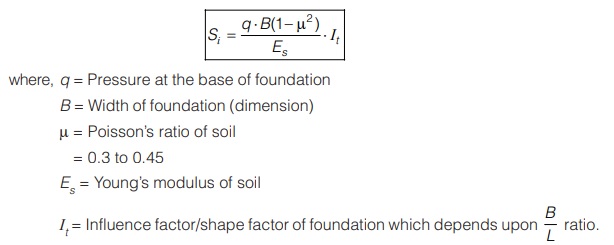
Consolidation Settlement (Scon.)
The total consolidation settlement of soil can be further divided into two parts.
(i) Settlement due to primary consolidation (SC)
(ii) Settlement due to secondary consolidation (SS)
The total consolidation settlement and the time of consolidation in clays is much greater than that of sand. Hence clays are more compressible than sand.
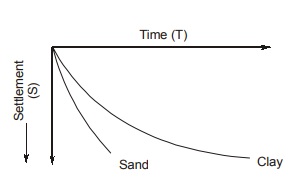
(i) Computation of Settlement due to Primary Consolidation:
- It occurs due to expulsion of pore water from a loaded saturated soil mass.
- In primary consolidation, the rate of flow is controlled by pore pressure, the permeability and the compressibility of the soil.
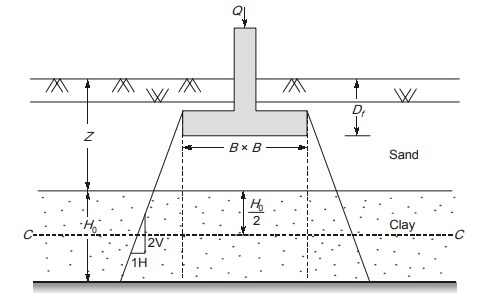
Method-1:
If ∆e is change in void ratio due to increase in effective stress on soil layer, as per change in void ratio method,
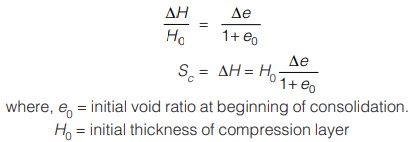
This method is suitable for both over consolidated and normally consolidated soils.
Method-2: When av is known

Method-3: When Coeff. of Compressibility (mv ) is known
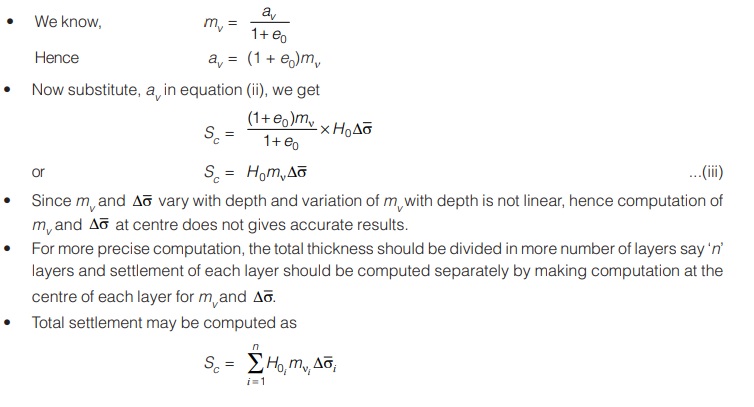
Method-4: When Cc is known
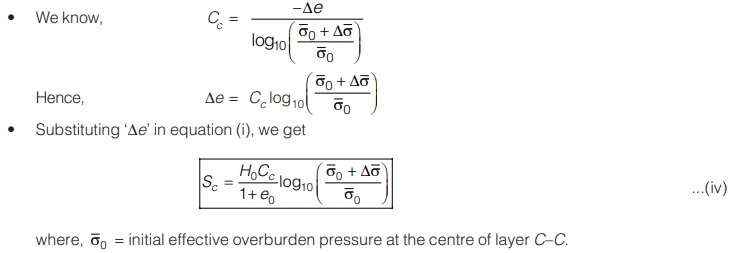
(ii) Settlement due to Secondary Settlement
- It is due to plastic readjustment of solids. It occurs at very slow rate and is negligible in granular soils.
- The secondary settlement, after time ‘t’ from the completion of primary settlement is given by
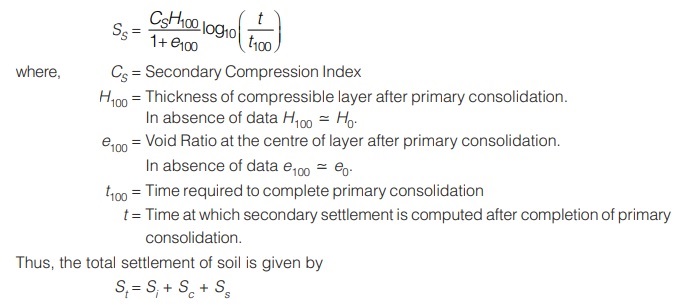
VERTICAL SAND DRAINS
- The slow consolidation process of clays, and silts may be accelerated by installing vertical sand drains which aids in the expulsion of pore water from the soil at a faster rate. This speeds up the rate of consolidation accelerates the rate of settlement whereas magnitude of settlement is unaffected.
- Sand drains are most widely used when an embankment is to be constructed over a highly compressible clay layer. Sand drains are also used to drain and to control landslides.
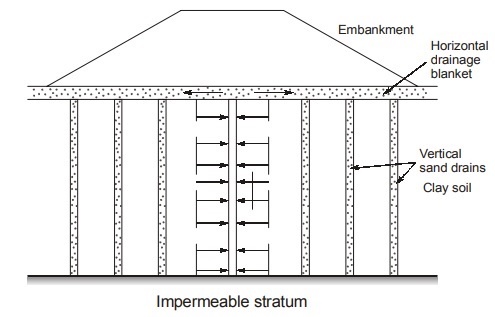
- The main objective of providing sand drains is to reduce the drainage path and hence to accelerate the consolidation process. Consolidation is then mainly due to horizontal radial drainage which results in faster dissipation of excess pore water pressure.
- Sand drains are installed by driving a casing through the clay layer and making boreholes. These drains are placed in either a square or a triangular pattern.

